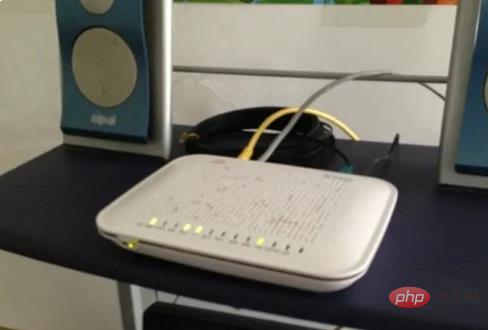Home >Common Problem >What does alm mean on the device?
What does alm mean on the device?
- 藏色散人Original
- 2022-10-28 13:44:3664225browse
The alm on the device is an alarm light, which may light up when a problem occurs or a link is established; the indicator light that reflects the working status of the device usually has a red light indicating that it is in a running state, and a green light indicating that it is stopped. In operation status, the milky white light is on to indicate that it is in testing status.

#The operating environment of this tutorial: Windows 7 system, Dell G3 computer.
What does alm mean on the device?
ALM is an alarm light. It may light up when a problem occurs or when a link is established.
WLK is the WAN link light. When the end line is normal, it should be always on. If it flashes or does not light up, it means there is a problem with the line connected to the telecommunications office.
LLK is the LAN link light. When the link to the network card is normal, it should be always on. If it flashes or does not light up, it means there is a problem with the line connected to the network card.
WAC and LAC are link activity indicators respectively. When data is passing through, they will flash.

Extended information
The indicator light reflects the working status of the equipment. Usually the red light indicates that it is in operation and the green light indicates that it is out of service. The milky white light is on to indicate that it is in testing status.
The indicator light that reflects the position status of the equipment usually means that the equipment is powered on when the light is on, and the equipment is out of power when the light is off; the indicator light that reflects the working status of the circuit usually means that the red light is on when it is powered on, and the green light on when it is on means that there is no power. In order to avoid misjudgment, the integrity of the bulb or light-emitting diode should be checked frequently or regularly during operation.
For more related knowledge, please visit the FAQ column!
The above is the detailed content of What does alm mean on the device?. For more information, please follow other related articles on the PHP Chinese website!

